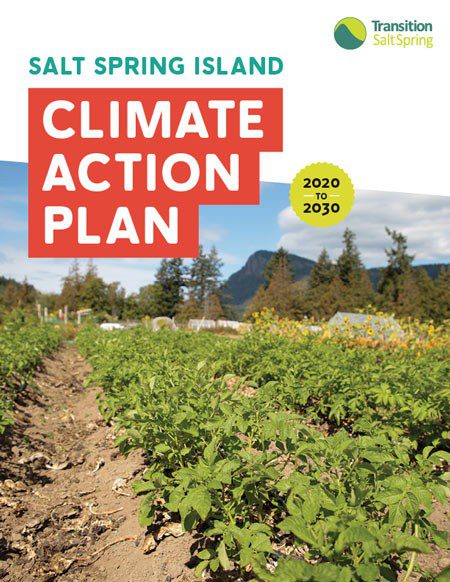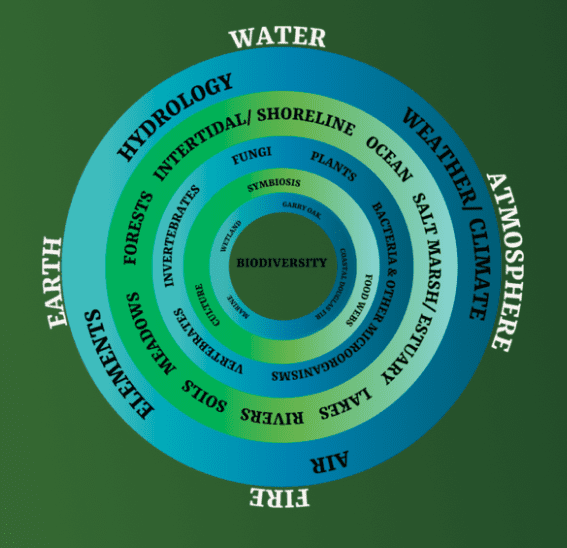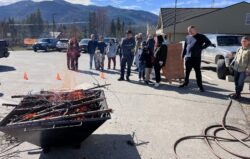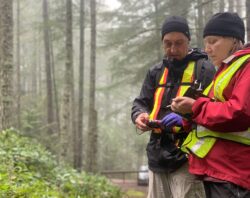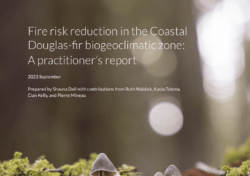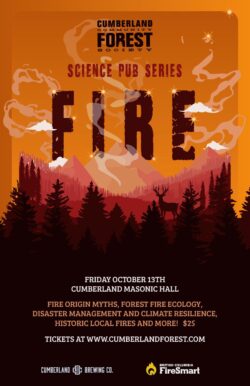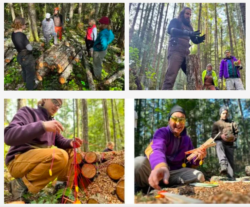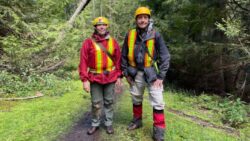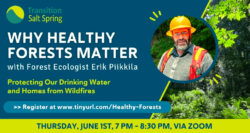Salt Spring’s forests are our greatest natural asset for climate change mitigation and adaptation.
Salt Spring Island’s Coastal Douglas fir (CDF) forests are part of a globally rare ecological zone found almost exclusively on BC’s south coast.
These forests and associated ecosystems are critical to the health of island communities – watershed health and freshwater availability, resilience from drought, flood and fire, and mitigation of impacts of climate change. But they have been undergoing drastic change and are increasingly at risk.
Find out how CDF forests support us and how we can properly steward them to reduce risk and enhance island resilience. Watch the video here!
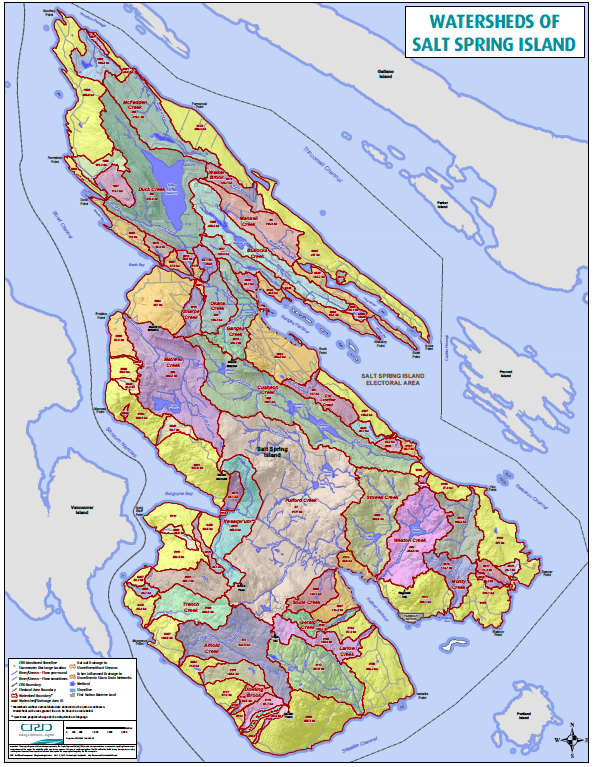
Supporting Watershed Health
With all of Salt Spring Island’s freshwater coming from rainfall, island communities must maintain the delicate freshwater balance of island watersheds.
Trees act as natural sponges, helping to capture, store and filter rainfall into streams, rivers and aquifers.
They also help cool the ground surface, keeping soils from over-heating and drying out.
Intact forests in particular play a key role in watershed health. Their multi-layered canopies act as a buffer, blocking wind to reduce loss of water to the atmosphere through evaporation. These forests store and filter water within their extensive root systems and larger woody debris (dead fallen and standing wood), which absorbs and holds moisture like a sponge. By retaining water in the watershed for longer and stabilizing seasonal groundwater levels, intact CDF forests play a pivotal role in reducing drought, flood and fire risk.
Forests remove CO2 from the air, store carbon, and play a vital role in the water cycle.
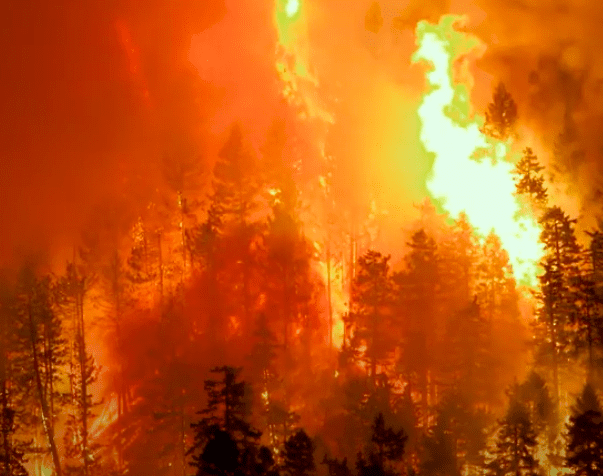
Carbon Stewardship
Through PHOTOSYNTHESIS, forests act as critical CARBON SINKS, absorbing and storing carbon and other greenhouse gases and providing us with oxygen. In this way, they mitigate the impacts of climate change, which include fire, drought and flood risk.
Forests store carbon in places in the forest referred to as CARBON POOLS – trunks/stems/bark, branches, foliage, shrubs, woody debris and other organic matter (detritus) on the forest floor, as well as soils and roots.
The longer a forest is left to mature, the greater the total amount of carbon it stores. Salt Spring’s second-growth forests alone sequester three to five times more carbon than new forests each year. EACH HECTARE of Salt Spring forest stores approximately 250-400 tonnes of carbon and sequesters (absorbs) an additional 1-3 tonnes of carbon into carbon pools each year.
IN TOTAL, Salt Spring’s 14,000 hectares of forest store approximately 5.6 million tonnes of carbon and sequester 14,000-42,000 tonnes of carbon per year.
Forest ecologists on Salt Spring found that it took over 100 years for a new forest to recover the carbon that had been lost from the clearing of mature forest.

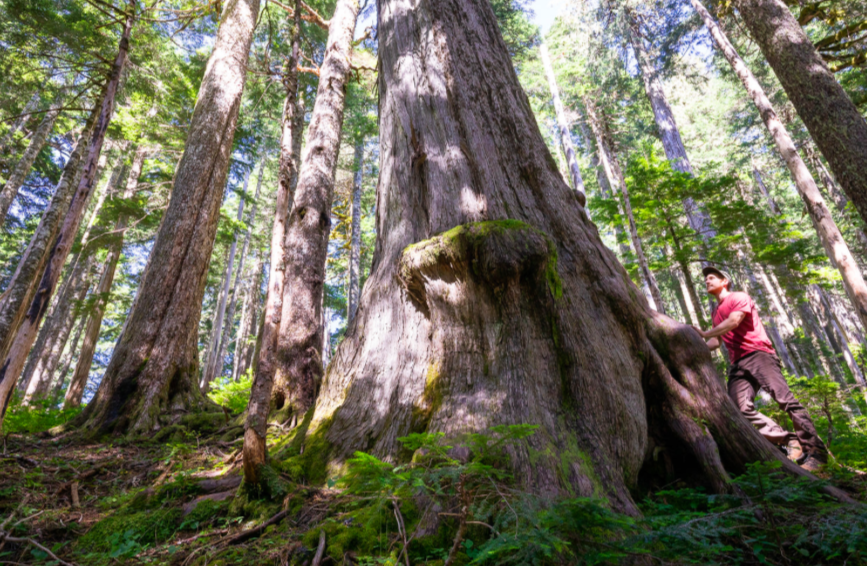
Fire Ecology
Though often considered a fire risk, healthy mature intact forests act as a natural firebreak.
The older the forest, the more large, woody debris is available on the forest floor, the greater the water storage capacity, and the greater the benefit to ground water, lakes and rivers. In a mature forest with nurse logs and well-developed soils, water is stored deep in the soil and forest floor during winter rains, acting as a reservoir that can be drawn upon in drier times of year. This means that healthy forests, particularly our local Coastal Douglas fir, are especially resistant to fire.
By contrast, when a forest is clearcut, water evaporates from these same soils, roots and dead wood, leaving behind a drier ecosystem that is more vulnerable to both drought and fire. The presence of large amounts of dried-up wood waste and the act of burning this dry woody debris increases the risk of fire. A mature forest is therefore at much lower risk of fire than a recently cleared forest that is losing water and contains slash piles / leftover wood waste, or even a younger forest with less capacity for water storage.
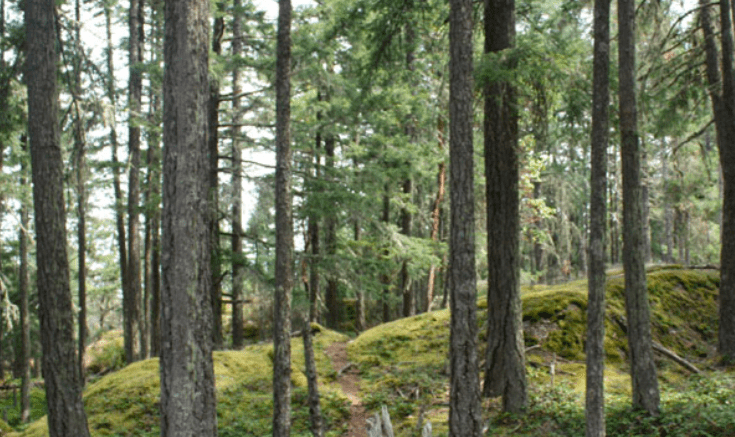
What about carbon stored in wood products?
While a portion of carbon from cleared forest may continue to be stored in long-lasting wood products, this is a small amount. More than half of the total carbon stored in forests is held in other parts of the forest than those harvested, such as soils, roots, and detritus. These carbon pools emit most of their carbon (whether through dry decomposition, soil leaching or slash burning) when the forest is cleared. Any carbon stored in wood products is also largely cancelled out by the emissions created to cut, transport and process the timber and products. And not all wood products are long-lasting. Much of this timber is converted into shorter-lasting products of waste, which quickly emit their carbon.
Biodiversity
Salt Spring is home to a wide variety of ecosystems and habitats that are intricately interconnected with one another. Nutrients from the Salish Sea, carried onto shore by birds of prey, otters and other predators, feed the forests, which in turn maintain the balance of freshwater systems that sustain terrestrial ecosystems.
From the multi-layered canopies of differently aged trees to the healthy living soils beneath the forest floor, a healthy forest sustains a structural complexity that provides food and habitat for the species that call it home. In between, lush understories filled with berry bushes and other native plants, as well as standing or fallen woody debris provides important habitat to newts, salamanders, woodpeckers, bats, and many other types of wildlife.
Forest News & Events
Reducing Wildfire Risks & Biochar: TSS Members Travel to Clearwater, BC, to Talk About Forest Resiliency
Beyond Climate Change: the nuts and bolts of adaptation at the local scale
New Report Shows Us How to Reduce Wildfire Risks
FIRE Event- Ruth Waldick presents at Cumberland Community Forest Society Science Pub Series
Climate Adaptation Research Lab – Restoring the Maxwell Watershed with North Salt Spring Waterworks District.
TSS’s CARL project among finalists announced for 2023 Nature Inspiration Awards
Healthy forests can help protect us from disasters
Future-proof your Home with Water Management: $ave Money and Improve Resiliency by Harnessing Your Water Resources – Video
Why Healthy Forests Matter in Reducing Fire and Drought Risk with Erik Piikkila – Video
Fire Risk Reduction in the Coastal Douglas-fir Biogeoclimatic Zone- Video
What Salt Spring Can Do
CDF Stewardship Tips to Reduce Fire, Drought and Flood Risk:
- Preserve existing forest cover
- Install deer fencing (a fully enclosed area or fencing off small trees/shrubs)
- Remove invasive species (such as Scotch broom, gorse and ivy) that suppress other plants
- Replant native plants suited to soil moisture and light levels, especially on forest edges to protect tree roots from sun exposure
- Keep large fallen woody debris on forest floor and bring small suspended (“laddered”) debris down in contact with forest soil – bury in a wet area of the property if possible
And…
- Add your voice for increased CDF protection
- Get to know your local biodiversity
- Connect with a local conservancy, land trust, or other organization
Forest News & Events
Reducing Wildfire Risks & Biochar: TSS Members Travel to Clearwater, BC, to Talk About Forest Resiliency
Beyond Climate Change: the nuts and bolts of adaptation at the local scale
New Report Shows Us How to Reduce Wildfire Risks
FIRE Event- Ruth Waldick presents at Cumberland Community Forest Society Science Pub Series
Climate Adaptation Research Lab – Restoring the Maxwell Watershed with North Salt Spring Waterworks District.
TSS’s CARL project among finalists announced for 2023 Nature Inspiration Awards
Healthy forests can help protect us from disasters
Future-proof your Home with Water Management: $ave Money and Improve Resiliency by Harnessing Your Water Resources – Video
Why Healthy Forests Matter in Reducing Fire and Drought Risk with Erik Piikkila – Video
Fire Risk Reduction in the Coastal Douglas-fir Biogeoclimatic Zone- Video
Success Stories
- While much privately-owned forest is unprotected from clear-cut logging, Salt Spring has protected almost a third (3,950 hectares) of its forested land.
- Of 3,426 ha of protected areas on Salt Spring, 2,856 hectares, 20% of the total forested land on Salt Spring, is protected for conservation through public or private ownership (e.g., parks, nature reserves).
- A further 343 hectares of privately-held forest are protected by private covenants.
- 547 of the 737 hectares of forested Crown Land on Salt Spring are protected through provincial policy.
- The Islands Trust Conservancy’s Natural Area Protection Tax Exemption Program (NAPTEP) provides property tax exemptions to landowners who place protective covenants on title; twenty-five NAPTEP covenants protect over 330 ha on Salt Spring under this program; five property owners have placed covenants on property since 2011.
- Islanders have been passionate about protecting our forests, donating time and money to conservation organizations to successfully save forests now in public hands.
- The successful example of ecological timber harvesting as an alternative to clearcutting at Seven Raven Farms.
- Cultural and educational action and program activities led through the Xwaaq’um Project.
These achievements, though often hard-won, demonstrate that success is possible, but that much more needs to be done to maintain and enhance our island forests.

